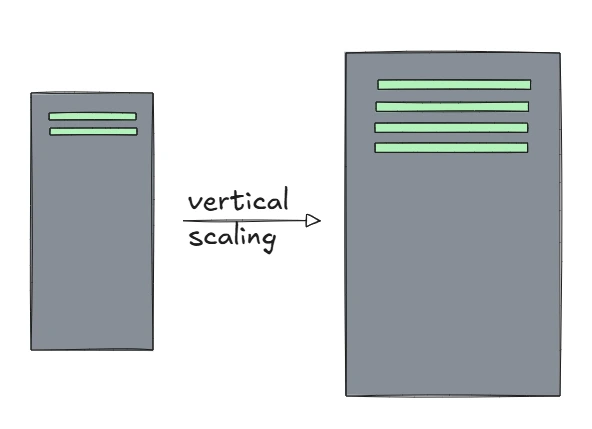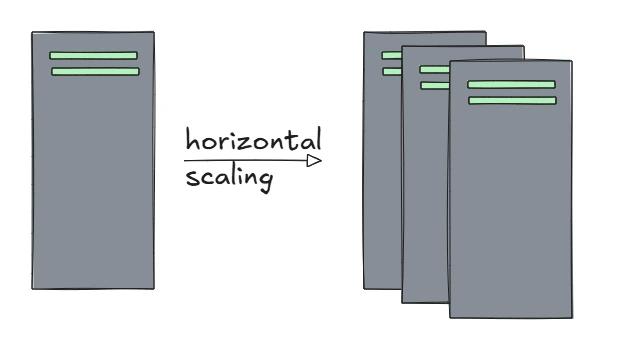Vertical and Horizontal Scaling
Scaling is how businesses handle increased demand on their systems. Whether you’re running a website, an app, or a service, scaling ensures your system can handle more users or data without crashing.
Vertical Scaling (Scaling Up)

Vertical scaling means making a single machine more powerful, adding more RAM, faster procesor, bigger hard-drive.
Advantage -
- Easy to implement.
- No need to change your application.
Disadvantage -
- Limited by the maximum capacity of the hardware.
- Can get expensive as you scale up.
Horizontal Scaling (Scaling Out)

Horizontal scaling means adding more machines to share the workload. Instead of upgrading one server, you add more servers and distribute the traffic between them.
Advantage -
- No limit to how much you can scale.
- Reduces the risk of a single point of failure.
Disadvantage -
- More complex to set up.
- Requires changes to your application (e.g., making it stateless).
Case Study
Initially, Netflix relied on vertical scaling by upgrading its on-premises servers to handle growing traffic. However, this approach proved costly and limited, especially during a major database failure in 2008. To overcome these challenges, Netflix transitioned to horizontal scaling by migrating to AWS.
Over time, they further optimized their system with a microservices architecture and their own CDN, Open Connect, showcasing how horizontal scaling can support massive global growth compared to the constraints of vertical scaling.